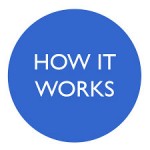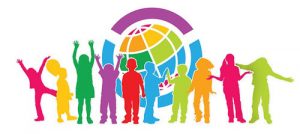ESSA: A Starter Kit for Private School Educators
Title IV
Introduction| What is ESSA? | ESSA & Private Schools | Consultation | The Titles
Title IV, Part A: Student Support & Academic Enrichment Grants
 Those of you who were familiar with No Child Left Behind knew this particular program as “Safe and Drug Free Schools.” Under ESSA, however, Title IV, Part A has morphed into a new, broadly inclusive block grant that can be used by public school districts and (to a lesser extent) state departments of education for myriad purposes. That’s good news! Better yet, funding for this program is subject to the equitability provisions of ESSA §8501, meaning that a proportionate share of money must be used to provide comparable services to private school students and educators.
Those of you who were familiar with No Child Left Behind knew this particular program as “Safe and Drug Free Schools.” Under ESSA, however, Title IV, Part A has morphed into a new, broadly inclusive block grant that can be used by public school districts and (to a lesser extent) state departments of education for myriad purposes. That’s good news! Better yet, funding for this program is subject to the equitability provisions of ESSA §8501, meaning that a proportionate share of money must be used to provide comparable services to private school students and educators.
What kind of activities can Title IV, Part A fund?
 Participating public school districts must use Title IV, Part A funds to address each of the following three purposes:
Participating public school districts must use Title IV, Part A funds to address each of the following three purposes:
- to develop and implement programs and activities that support access to a well-rounded education (ESSA §4107(a));
- to support safe and healthy students (ESSA §4108); and,
- to improve the use of technology to improve the academic achievement, academic growth, and digital literacy of all students (ESSA §4109(a)).
If a public school district receives more than $30,000 in Title IV, Part A funding, it must conduct a needs assessment and spend at least 20 percent of its allocation on programs/activities that support access to a well-rounded education, and not less than 20 percent on programs/activities that support safe and healthy students. The remaining funds may be spent on any of the three categories, with the proviso that no more than 15 percent of the total allocation may be spent for devices, equipment, software and digital content.
The three categories cover considerable ground. The following are among the allowable uses of funds mentioned in the statute as examples of programs and activities that support access to a well-rounded education:
- college and career guidance and counseling programs;
- financial literacy and Federal financial aid awareness activities;
- programs and activities that use music and the arts as tools to support student success through the promotion of constructive student engagement, problem solving, and conflict resolution;
- programming and activities to improve instruction and student engagement in science, technology, engineering, and mathematics, including computer science;
- activities to promote the development, implementation, and strengthening of programs to teach traditional American history, civics, economics, geography, or government education;
- foreign language instruction;
- environmental education;
- programs and activities that promote volunteerism and community involvement;
- programs and activities that support educational programs that integrate multiple disciplines, such as programs that combine arts and mathematics; and,
- other activities and programs to support student access to, and success in, a variety of well-rounded education experiences.
Similarly, each of the other two areas – safe and healthy students, and use of technology – permit Title IV, Part A funds to be used to provide a broad array of programs and activities. As is true of other ESSA programs, Title IV, Part A funds must be used to supplement, not supplant activities that participating schools (whether public or private) would ordinarily provide. (See Title II, Part A sidebar.)
How does Title IV, Part A funding work?
 ESSA authorizes $1.0 billion for Title IV, Part A in fiscal year 2017, and $1.1 billion in each of the following three years. (Remember: the authorization level is a funding limit, not a floor. See Title I sidebar.) State departments of education are permitted to retain up to four percent of the total state allocation to provide Title IV, Part A state activities. The remaining funds are allocated to public school districts that have applied to participate in the program. Given the flexibility and funding offered by Title IV, Part A, most public school districts can be expected to participate. That’s good news for private schools!
ESSA authorizes $1.0 billion for Title IV, Part A in fiscal year 2017, and $1.1 billion in each of the following three years. (Remember: the authorization level is a funding limit, not a floor. See Title I sidebar.) State departments of education are permitted to retain up to four percent of the total state allocation to provide Title IV, Part A state activities. The remaining funds are allocated to public school districts that have applied to participate in the program. Given the flexibility and funding offered by Title IV, Part A, most public school districts can be expected to participate. That’s good news for private schools!
Example: Assume that in the Friendly Public School District 92,000 students are enrolled in public schools, and 8,000 students are enrolled in nonprofit private schools. Further assume that the district’s total ESSA Title IV, Part A allocation is $3 million. Because the district’s private school enrollment equals 8 percent of the total public-plus-private school enrollment, $240,000 would be set aside to provide professional development activities for the district’s private school educators. A particular private school with a total enrollment of 250 students would be entitled to receive 250 X $30 = $7,500 worth of Title IV, Part A services.
 Remember: Be sure to ask whether your public school district will be participating in Title IV, Part A when you engage in your preliminary consultation for the coming school year. Not all districts will be recipients of Title IV-A funding, but those that will must provide comparable services to private school students and educators with equitable funding. Bear in mind that “comparable” doesn’t mean “same.” Your students and faculty are not required to participate in the same Title IV, Part A activities as their public school counterparts. Because this new ESSA program affords considerable latitude when it comes to allowable uses, you’ll want to think carefully about how to best utilize these funds. Finally, don’t forget that the opportunity to pool funds with other private schools in your district applies to Title IV, Part A.
Remember: Be sure to ask whether your public school district will be participating in Title IV, Part A when you engage in your preliminary consultation for the coming school year. Not all districts will be recipients of Title IV-A funding, but those that will must provide comparable services to private school students and educators with equitable funding. Bear in mind that “comparable” doesn’t mean “same.” Your students and faculty are not required to participate in the same Title IV, Part A activities as their public school counterparts. Because this new ESSA program affords considerable latitude when it comes to allowable uses, you’ll want to think carefully about how to best utilize these funds. Finally, don’t forget that the opportunity to pool funds with other private schools in your district applies to Title IV, Part A.
Title IV, Part B: 21st Century Community Learning Centers
This ESSA program works somewhat differently from the others we’ve encountered thus far. Title IV, Part B is a competitive grant program, meaning that funding isn’t automatically sent to states and school districts, or reserved for districts that meet certain requirements. Instead, prospective recipients of funding must create grant proposals, and compete against other applicants for awards. The proposals are judged by persons trained by the U.S. Department of Education staff, which is not under any legal obligation to allocate funds simply because an application has been submitted.
 Title IV, Part B grants are awarded to support academic enrichment programs that take place outside of regular school hours, including summer. Eligible applicants include public school districts, community-based organizations, other public or private entities, and/or consortia of two or more such agencies, organizations, or entities (ESSA §4201(b)(3)). As private entities, private schools are eligible to make application for Title IV, Part B grants, though in practice, few do so.
Title IV, Part B grants are awarded to support academic enrichment programs that take place outside of regular school hours, including summer. Eligible applicants include public school districts, community-based organizations, other public or private entities, and/or consortia of two or more such agencies, organizations, or entities (ESSA §4201(b)(3)). As private entities, private schools are eligible to make application for Title IV, Part B grants, though in practice, few do so.
Because Title IV, Part A is subject to the private school equitability provisions found in ESSA §8501, recipients of grants must make the funded programs they operate available to children enrolled in private schools. In addition to offering programming and activities designed to help students succeed academically, Title IV, Part A offers families of students served by grant recipients, “…opportunities for active and meaningful engagement in their children’s education, including opportunities for literacy and related educational development.” (ESSA § 4201(b)(1)(B)).
Title IV, Part F, Subpart 4, Section 4644
This subpart of Title IV is more popularly known as the “Jacob K. Javits Gifted and Talented Students Education Program,” in honor of the late former U.S. Senator from the state of New York. The purpose of the program is “to build and enhance the ability of elementary schools and secondary schools nationwide to identify gifted and talented students and meet their special educational needs.” (ESSA §4644(a)) Available funding may be used for the purpose of “establishing and operating programs and projects for identifying and serving gifted and talented students.” (ESSA §4644(c)(2)).
 Section 4644 has a special subsection that addresses the participation of private school children and teachers. It reads as follows:
Section 4644 has a special subsection that addresses the participation of private school children and teachers. It reads as follows:
“In making grants and entering into contracts under this section, the Secretary shall ensure, where appropriate, that provision is made for the equitable participation of students and teachers in private nonprofit elementary schools and secondary schools, including the participation of teachers and other personnel in professional development programs serving such students.” (ESSA §4644(g))
While this particular ESSA program is not heavily funded, private school officials should, nevertheless, inquire about opportunities for participation when they engage in consultation with their public school district colleagues in advance of a new school year.
Next: Title V, Part A



 Occasionally, a public school district colleague may tell a private school official that, although the district is participating in Title IV, Part A, he/she isn’t sure whether ESSA’s private school equitability requirements are applicable. While that particular individual may, indeed, be unaware, someone in a position of authority at the district provided a written assurance to the state department of education noting that the district will comply with the private school equitability requirements found in ESSA § 4106(e)(2)(B). In fact, not only must districts provide such a written assurances in their application to state departments of education; state departments of education must provide similar written assurances to the U.S. Department of Education.
Occasionally, a public school district colleague may tell a private school official that, although the district is participating in Title IV, Part A, he/she isn’t sure whether ESSA’s private school equitability requirements are applicable. While that particular individual may, indeed, be unaware, someone in a position of authority at the district provided a written assurance to the state department of education noting that the district will comply with the private school equitability requirements found in ESSA § 4106(e)(2)(B). In fact, not only must districts provide such a written assurances in their application to state departments of education; state departments of education must provide similar written assurances to the U.S. Department of Education. “timely.” We mentioned the first of these on the “
“timely.” We mentioned the first of these on the “ public school districts. The grants fall into one of two categories.
public school districts. The grants fall into one of two categories. 